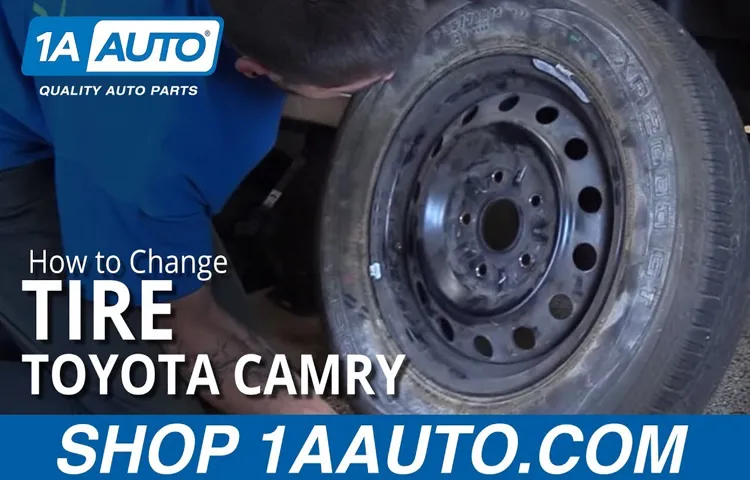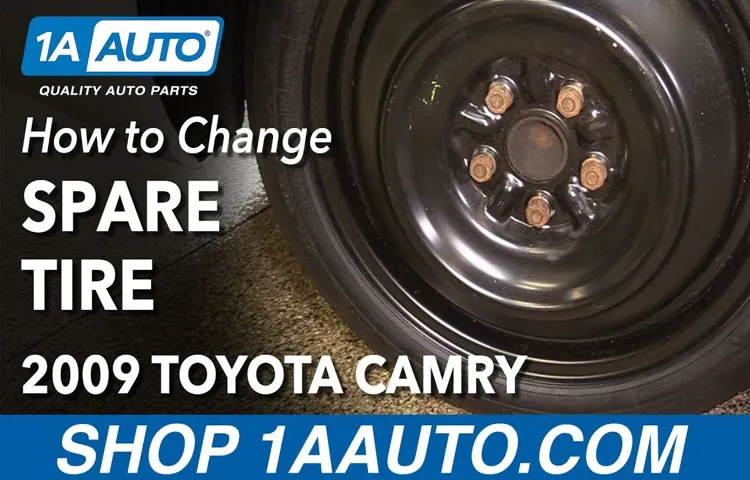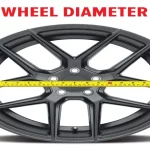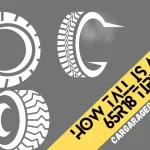When you’re on the road, a flat tire can happen to anyone at any time, and it’s always best to know how to tackle the issue yourself. Whether you’re a newbie driver or a seasoned driver, changing a tire on your Toyota Camry is an essential skill to learn. First, make sure you have all the necessary tools in your trunk or underneath the rear cargo area.
You’ll need a spare tire, jack, lug wrench, and tire iron. Once you locate these items, use the lug wrench to loosen the lug nuts on the flat tire before raising the vehicle with the jack. But before you attempt to change a tire, it’s crucial to prioritize your safety.
Make sure you’re parked in a safe area, and turn on your hazard lights, so other drivers are aware of your presence. In this blog post, we’ll take you through the step-by-step process of changing a tire on your Toyota Camry, so you will no longer have to worry about being stranded on the side of the road. By following our instructions, you’ll be back to driving on the road safely and confidently in no time.
Table of Contents
Gather Necessary Tools and Materials
Changing a tire on a Toyota Camry is a necessary skill that every driver should know. Before getting started, make sure you have all the necessary tools and materials. You’ll need a lug wrench, a spare tire, a jack, and a flashlight.
Some optional but helpful items include gloves, a tire pressure gauge, and a wheel chock to prevent your car from rolling. It’s best to keep these items in your trunk or storage compartment at all times so that you’re always prepared for a flat tire emergency. It’s also important to make sure that your spare tire is in good condition and properly inflated before hitting the road.
By having everything on hand, you can change your tire quickly and safely without any unnecessary stress or hassle.
Check Spare Tire
Before you hit the road, make sure to check your spare tire. This small but critical component can save you from being stranded on the side of the road. Gather a lug wrench, jack, and your spare tire.
These are the necessary tools you need to check and potentially change your tire. Additionally, make sure that you have a wheel chock or brick handy to ensure your car doesn’t accidentally roll while you work on changing your tire. When you’ve gathered all the necessary tools and materials, take a few minutes to inspect your spare tire.
Make sure it’s properly inflated and that there are no cracks, punctures, or signs of wear and tear. Remember, you don’t want to find out that your spare tire is unusable when you’re stuck on the side of the road with a flat. By taking a few extra minutes to check your spare tire before you hit the road, you can have peace of mind and be prepared for any unexpected bumps in the road.

Use Jack and Lug Wrench
When it comes to changing a tire, having the right tools and materials is crucial for a fast and effective process. To start, you’ll need a jack and a lug wrench. These two tools will allow you to lift the car and remove the lug nuts on the tire you need to replace.
But before you start the actual tire change, it’s important to gather all the necessary materials. You’ll want to make sure you have a spare tire, of course, but also a tire pressure gauge, a wheel chock or blocks to keep the car in place, and a flashlight if you’re changing the tire at night. It’s also a good idea to wear gloves and keep a few extra rags or towels handy for any dirty or greasy parts.
By having all these tools and materials ready before you start, you’ll be able to change your tire quickly and safely without any unexpected surprises.
Remove Flat Tire
When it comes to removing a flat tire, you’ll need a few essential tools and materials to get the job done. First and foremost, you’ll need a spare tire that’s properly inflated and ready to go. You’ll also need a lug wrench, which is used to loosen the lug nuts that hold the tire in place.
It’s important to make sure that the lug wrench fits the lug nuts on your car, as sizes can vary. Other tools you may need include a jack to lift your car up, wheel chocks to prevent your car from rolling, and a flashlight if you’re working in low light conditions. Once you have all the necessary tools and materials gathered, you’ll be ready to tackle the task of changing your flat tire.
Replace with Spare Tire
Changing a tire on a Toyota Camry is a task everyone who owns a car should know how to do. You never know when you might find yourself in a situation where you need to replace a flat tire on the side of the road. First, make sure you have the necessary tools: a spare tire, a jack, and a lug wrench.
Locate the spare tire and jack in your car’s trunk and loosen the lug nuts on the flat tire with the lug wrench before raising the car with the jack. Once the car is lifted, remove the lug nuts completely and take the flat tire off. Replace it with the spare, making sure to align the holes in the wheel with the studs.
Then, tighten the lug nuts by hand before lowering the car and finishing tightening the nuts with the lug wrench. Check your tire pressure and make sure all lug nuts are tightened properly before hitting the road again. With a bit of practice, changing a tire can be quick and straightforward, giving you peace of mind on your car journey.
Align Rim and Lug Bolts
When replacing a flat tire with a spare tire, it is important to properly align the rim and lug bolts. First, make sure the spare tire is fully inflated and secure the lug wrench onto the lug nut. Loosen each lug nut on the flat tire, but do not remove them entirely.
Then, use a car jack to lift the vehicle off the ground and remove the flat tire. Align the rim of the spare tire with the bolts and place it onto the wheel base. Attach the lug nuts and tighten them as much as possible before lowering the vehicle back onto the ground.
Finally, use a torque wrench to fully tighten the lug nuts in a star pattern. Taking these steps will ensure that the spare tire is properly secured and prevent any accidents on the road.
Hand Tighten Lug Nuts
If you find yourself in a situation where you need to replace a flat tire with a spare, it’s important to remember to hand tighten the lug nuts before driving. This means securing them as tightly as you can using only your hands, without the help of a wrench or other tools. By doing so, you can avoid over-tightening and potentially damaging the threads on the bolts or nuts.
Keep in mind that this is just a temporary solution, and it’s essential to have the tire professionally replaced as soon as possible. Remember, safety first when it comes to driving, especially with a spare tire.
Lower Car and Tighten Lug Nuts
When you find yourself with a flat tire, it’s important to know how to replace it with your spare tire. First, make sure your car is in a safe and stable location before beginning. Then, loosen the lug nuts on the flat tire while it’s still on the ground.
After that, use a jack to lift the car and remove the lug nuts completely before taking off the flat tire. Before placing the spare tire on, ensure it is properly inflated and matches the rest of the tires on your vehicle. Tighten the lug nuts as much as possible by hand before lowering your car back to the ground.
Once it’s on the ground, further tighten the lug nuts using a wrench to ensure that the spare tire is secure. It’s also important to remember that using your spare tire is only meant to be a temporary solution, and you should have your original tire repaired or replaced as soon as possible. By following these steps, you can quickly and safely replace a flat tire with your spare tire.
Check Tire Pressure
Changing a tire on a Toyota Camry can be a daunting task, but it’s essential to know how to do it in case of emergencies. The first step in changing a tire on a Toyota Camry is to check the tire pressure. This will ensure that the replacement tire has the correct pressure for your vehicle.
Generally, tire pressure can be found on the driver’s side door jam or in the owner’s manual. Use an accurate pressure gauge to measure the tire pressure and adjust accordingly. It’s crucial to note that underinflated or overinflated tires can lead to uneven tire wear and even accidents.
Checking tire pressure regularly will not only ensure your safety on the road but also prolong the life of your tires. Always remember to perform a visual inspection of the tire before inflating it and make sure there are no nails or other sharp objects embedded in the tire. With proper tire pressure and a visual inspection, you’re one step closer to safely changing a tire on your Toyota Camry.
Reinflate Spare Tire
If you notice that your spare tire pressure is low, it’s important to reinflate it properly. Not only can driving with underinflated tires be hazardous, it can also wear down your tires faster and decrease your fuel economy. To check the tire pressure of your spare tire, you’ll need a tire pressure gauge.
Make sure you know the recommended tire pressure for your vehicle (often found in the owner’s manual or on the driver’s side door jamb) and compare it to the pressure reading on your gauge. If the pressure is lower than recommended, use an air compressor to add air until it reaches the proper level. Be careful not to overinflate the tire.
Once it’s properly inflated, be sure to rotate your spare tire into the regular rotation of your tires to promote even wear and prolong their lifespan. So, the next time you’re checking your vehicle’s tire pressure, don’t forget to check your spare tire too!
Monitor Tire Pressure
Monitoring tire pressure is important for maintaining safe driving conditions and prolonging the life of your tires. Not only will proper tire pressure help you avoid accidents, but it can also save you money on gas and reduce wear and tear on your vehicle. So, how often should you check your tire pressure? It is recommended to check your tire pressure at least once a month and before long trips.
You can use a tire pressure gauge to accurately measure the pressure of each tire. Keep in mind that tire pressure can change with temperature, so also check your tires during extreme weather conditions. By regularly monitoring your tire pressure, you can ensure that your vehicle is operating safely and efficiently on the road.
Conclusion
So there you have it folks, changing a tire on a Toyota Camry is not rocket science, but it does require a bit of elbow grease and some basic knowledge. The next time you find yourself stranded on the side of the road with a flat tire, don’t panic, just remember these simple steps and you’ll be back on the road in no time. And who knows, maybe your newfound tire-changing skills will impress your friends and family – just don’t forget to tell them where you learned them from!”
FAQs
What tools do I need to change a tire on a Toyota Camry?
You will need a jack, lug wrench, spare tire, and wheel chocks.
Where is the best place to jack up my Toyota Camry to change a tire?
You should consult your owner’s manual, but typically the jack should be placed under the vehicle’s designated jacking point.
How do I loosen the lug nuts on my Toyota Camry tire?
Use the lug wrench to turn the nuts counterclockwise until they are loose enough to be removed by hand.
How do I remove a flat tire from my Toyota Camry?
Lift the flat tire off the wheel hub and place it to the side, being careful not to damage the wheel or the car.
How do I install the spare tire on my Toyota Camry?
Place the spare tire onto the wheel hub and hand-tighten the lug nuts. Then, use the lug wrench to tighten them further.
How much air pressure should I put in the spare tire on my Toyota Camry?
Consult your owner’s manual, but typically the spare tire should be inflated to the recommended pressure listed on the tire itself.
What should I do with the flat tire after I change it on my Toyota Camry?
Put the flat tire in the designated storage location in your vehicle (if applicable) or secure it in your trunk.



